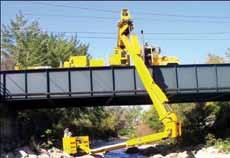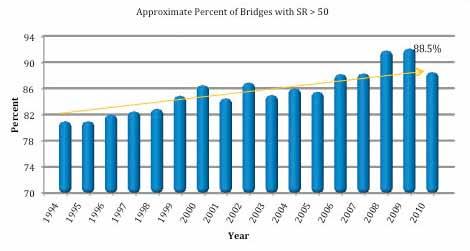
3 minute read
Preserving the past and maintaining the future of public bridge infrastructure
Venu J. Gupta, P.E., Director, Facilities Development and Management, City of Milwaukee, Wisconsin, and member, APWA Engineering and Technology Committee; Craig Liberto, Structural Design Manager, City of Milwaukee, Wisconsin
anagers of municipal infrastructure assets must make difficult technical and capital decisions regarding when and how to maintain, repair or renew their assets, while working with restrained budgets. Public officials must allocate funds among competing yet deserving needs, often having to make decisions based on incomplete data.
Advertisement
Bridges represent the fundamental backbone of any city’s economy. At the same time, however, bridges are so common that they melt into the backdrop of everyday life and their importance in the functioning of our society is often overlooked. It is the obligation and responsibility of public officials and public works managers to preserve that has been built. A strategic capital funding plan to preserve the bridge infrastructure is only possible with accurate data and a solid knowledge of the deficiencies which must be corrected and to provide routine maintenance.
As they age, bridges require costly repair and maintenance; therefore it is critical to inspect and develop a bridge maintenance, rehabilitation and reconstruction program that optimizes over the long term the use of limited resources.
To develop an integrated (capital and maintenance) multi-year bridge program, an accurate inventory and sophisticated inspection program is a must.
The following article examines the condition assessment process used by the City of Milwaukee, Department of Public Works.
The City of Milwaukee Bridge Program is based on the concept of performing the right maintenance at the right time on the right bridge.
The following represents the City of Milwaukee’s capital improvement and conditions assessment program for bridges. The plan incorporates a six-year plan identifying long-range capital needs and establishes strategies for the rehabilitation and replacement of bridges.
Rehabilitation and Replacement Program: A. Bridges Asset Inventory and Clarification
• 179 City-owned and maintained bridges • Comparison of bridge types —Fixed 133 —Pedestrian 13 —Viaduct 12
—Movable - Vertical Lift 8 - Bascule 13 • Asset Value: $220,000,000.00 • Estimated useful life: —70 yrs for new bridges, 40 yrs for rehab, 50 yrs for movable bridges • Estimated Preservation effort per year (see Chart 1)
B. Bridge Structures Inspection
• Inspections are done in accordance with FHWA (Federal Highway
Administration) and WisDot (Wisconsin Department of Transportation) standards by public works inspectors who are certified FHWA bridge inspectors. • Bridges are inspected every 24 months, except annually for movable bridges and structurally deficient bridges. (see sample report with photographs) • Standardized inspection reports – Submitted to WisDOT and entered into their database
Millions
– Highway Structures Information (HSIS) database generates a bridge Sufficiency Rating (SR)
C. Condition Rating of Bridges/ Sufficiency Rating (SR)
• FHWA Standard measures service condition
• Factors determining SR Rating i) Structural adequacy and safety ii) Deterioration iii) Service and functional obsolescence iv) Geometrics v) Essentiality for public use • Sufficiency Rating: A computational analysis that determines the ability of a bridge to remain in service. Depending on bridge rating, federal funding may be available. i) Rating between 80 and 50, eligible for rehabilitation ii) Rating less than 50, eligible for rehabilitation or replace ment Example: A fifty-year-old bridge may be structurally adequate but deficient due to current roadway widths, standards, or clearance.

Bridge Inspection using Reach-All D. Milwaukee Bridge Performance Graph (see below)
E. Bridge Funding Sources and Criteria
• Federal/State • Local Funding • Special Programs, e.g. ARRA,
Tiger Grants • Funding from adjoining communities for shared bridges
Venu Gupta can be reached at (414) 286-3401 or venu.gupta@milwaukee.gov; Craig Liberto can be reached at (414) 286-3294 or craig.liberto@ milwaukee.gov.

D. Milwaukee Bridge Performance Graph












